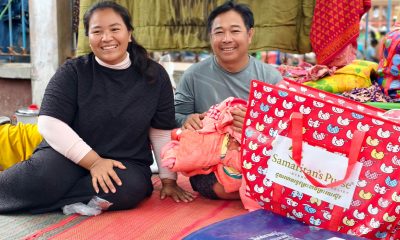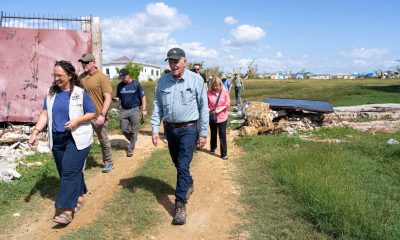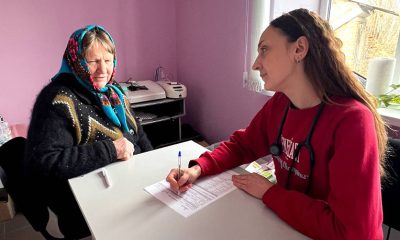A large-scale exercise in Alaska will help both the state and Samaritan's Purse respond efficiently the next time catastrophe strikes
Fifty years ago, a 9.2 magnitude earthquake—the largest in U.S. history—struck Alaska. The monster quake triggered a deadly tsunami, massive landslides, and caused damage from Canada to Hawaii.
Five months ago, a deadly typhoon devastated the Philippines, leveling tens of thousands of homes and causing widespread destruction and loss of life.

A mobile field hospital is an important component to meet critical needs in the aftermath of a disaster.
This weekend, Samaritan’s Purse is participating in Alaska Shield, an exercise that will help prepare the state to be ready the next time disaster strikes as well as ensuring we will be able to operate at peak efficiency when we respond to crises around the world.
“Training and readiness are part of our ongoing process,” said Barry Hall, Director of Program Support and one of more than two dozen Samaritan’s Purse disaster relief experts helping with the exercise. “These types of exercises are critical to ensure our readiness when an actual disaster happens.”
Alaska Shield 2014 is a statewide training exercise that will help improve response and initial recovery for a catastrophic earthquake and resulting tsunami in cold weather conditions. It is an opportunity to prepare for a south-central Alaska earthquake that experts say is a case of when, not if.

The realism of the exercise will pay off in future disaster responses.
Samaritan’s Purse has been working in Alaska since 2006, with relief, feeding, and rebuilding programs. We were asked to participate in the exercise by state emergency management personnel.
“We have a great relationship with the folks of the state,” said Luther Harrison, Vice President of North American Ministry. “They know our resources, our capacity, and capability. We are here to do the things that we do with quality and excellence.”
We are not only lending expertise to the state gleaned through decades of disaster response, but using the exercise to improve our capacity to respond to catastrophes such as Typhoon Haiyan, which struck the Philippines last November.
Samaritan’s Purse deployed a mobile field hospital, similar to the one we used in the Philippines, along with a 22-person medical team that includes surgeons, physicians, ER nurses, and anesthesiologists.

After being assessed in the field, “patients” are sent to the field hospital for treatment.
The field hospital is adjacent to the Alaska Medical Station and is equipped with an emergency room, surgical theater, patient wards, laboratory and radiological services. It is designed to handle patients with more severe injuries.
During the exercise “patients” are initially seen at the Alaska Medical Station. Those with severe injuries are triaged and transported to the Samaritan’s Purse field hospital. They arrive with pre-applied cosmetic injuries (moulage) to simulate various injuries that might be encountered in a true disaster scenario, such as fractures, protruding exposed bones, and hypothermia.

Staffing the mobile field hospital gives Samaritan’s Purse medical staff vital experience for the next time we respond to disaster.
“It’s as close are you are going to get to the real thing without actually being the real thing,” said Dr. Lance Plyler, Chief Medical Officer for disaster responses.
Each of the disaster response team members from Samaritan’s Purse has been carefully selected to provide comprehensive medical management for patient care.
“It’s one thing sitting in a classroom and doing a tabletop exercise, but when you get to go to the field and respond to—in this case patients that look very real—it better prepares the medical team to respond in an actual emergency,” Hall said.





